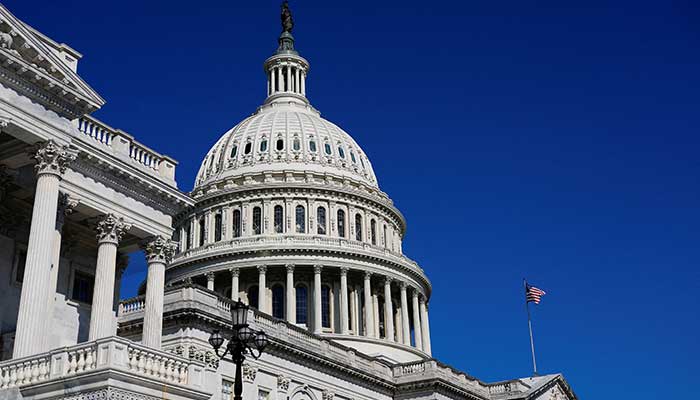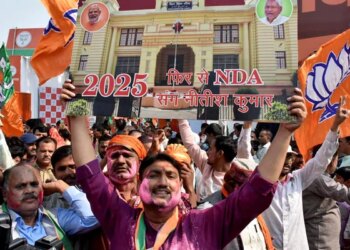Select Language:
A view of the US Capitol’s dome during a vote on a short-term funding measure aimed at preventing a partial government shutdown scheduled to start October 1. This scene was captured on Capitol Hill in Washington, D.C., on September 19, 2025. — Reuters
A significant deadlock between Republican President Donald Trump and congressional Democrats has resulted in the 15th government shutdown in the United States since 1981.
Here’s a breakdown of what’s needed to reopen the government.
What are the Republicans demanding?
Trump’s Republican Party holds control of both the House and the Senate, and they’ve already achieved substantial budget victories this year. The comprehensive legislation dubbed the “One Big Beautiful Bill,” passed in July, increased funding for defense and immigration enforcement, while reducing allocations for green energy initiatives and other Democratic priorities. It also implemented substantial cuts to the Medicaid healthcare program for low-income and disabled individuals to offset tax cuts primarily benefiting the wealthy.
Additionally, Republicans have largely supported the White House’s attempts to rescind funds previously approved by Congress for foreign aid and public broadcasting, despite such actions infringing on lawmakers’ constitutional authority over spending. They’ve expressed willingness to support a continuing resolution that would extend current funding levels through November 21, providing more time to agree on a full-year budget.
What do the Democrats want?
As the minority party, Democrats have limited influence. Still, Republicans will need at least seven Democratic votes in the Senate, where most legislation requires 60 votes to advance in the 100-member chamber. Democrats are leveraging this position to push for the renewal of expanded healthcare subsidies provided through the Affordable Care Act (ACA). Their proposal aims to make permanent the enhanced tax credits that are set to expire at year’s end and extend them to more middle-income households.
If these tax benefits lapse, many of the 24 million Americans insured via the ACA would face sharply increased insurance costs, especially in states where Medicaid expansion has not been adopted. Democrats also seek to add language into any funding bill that would prevent Trump from unilaterally ignoring ACA provisions or withholding associated funds temporarily. They want to reverse some of the restrictions on ACA coverage imposed in the “One Big Beautiful Bill,” which would expand health coverage to seven million Americans by 2035 but increase government healthcare spending by $662 billion over a decade.
Republicans are open to addressing the expiring tax benefits separately, arguing that the issue should not be tied to the ongoing funding negotiations. They also accuse Democrats of attempting to use the short-term funding bill as a vehicle to expand government healthcare subsidies to undocumented immigrants residing in the U.S. illegally. Democrats counter that federal law prohibits such assistance and that their legislation would not alter this legal constraint.







